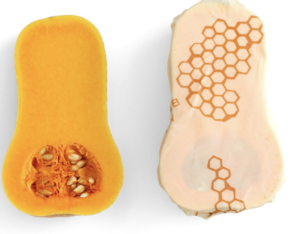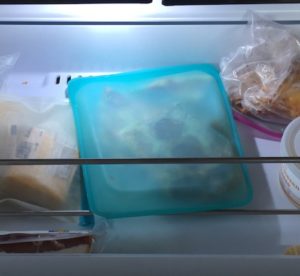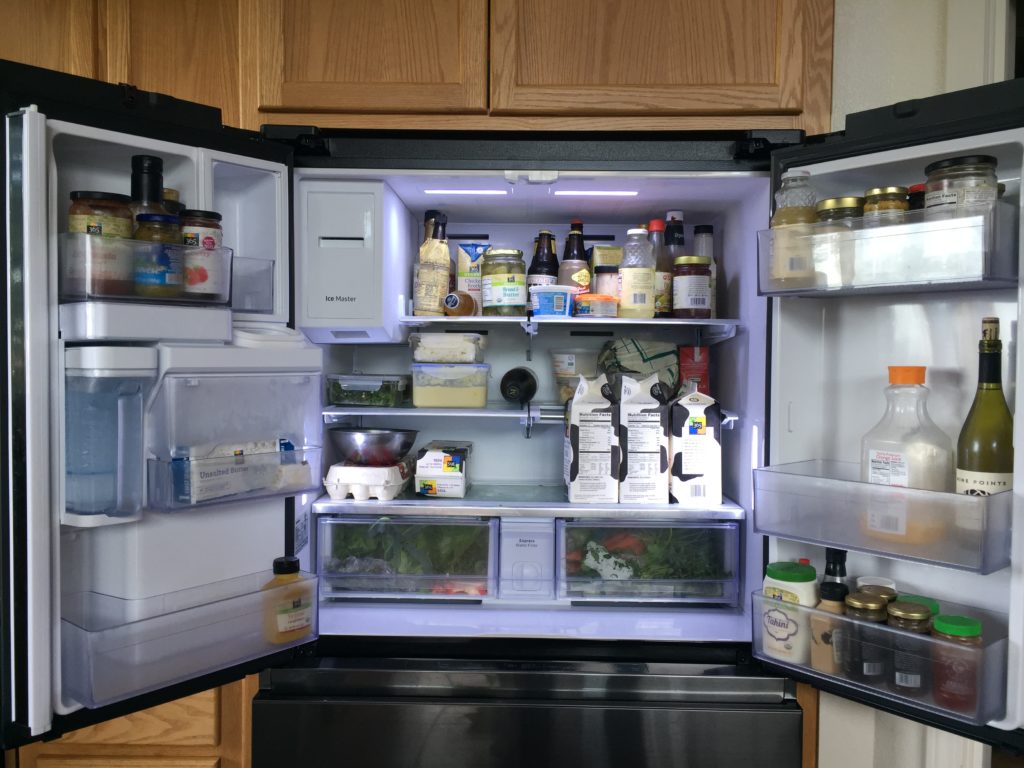
With a family of 6, we have a lot of food around here, and for my own sanity, I need it to keep it all organized so that we know what food we have – or don’t have — on hand.
I’m not a fan of food waste, and I’m even less of a fan of getting ready to make a meal and realizing that I don’t have an ingredient. That’s why I’ve been diligent with my pantry organization. The bulk food is moved out of bags and into glass jars, or my OXO POP containers. As for organization, I keep similar products together: cereal, grains, crackers, etc. I know which zone to search when I need an ingredient, and the family is pretty good at helping keep things organized in there.
But, when it comes to the refrigerator (and freezer) it has always been a ‘find a space and stick it there’ attitude. The result has led to a lot of frustration – lots of moving things around to find something, or lots of “Mom do we have any …?” I also find a lot of smashed, slimy or moldy food unearthed way past its consumable point.
I always want to keep a clean and organized fridge, but it doesn’t always turn out that way. Lately, I find myself ready to keep order in the fridge . . . but that’s because a new refrigerator just arrived! And with this arrival, I’ve challenged myself (and my family) to keep it organized.
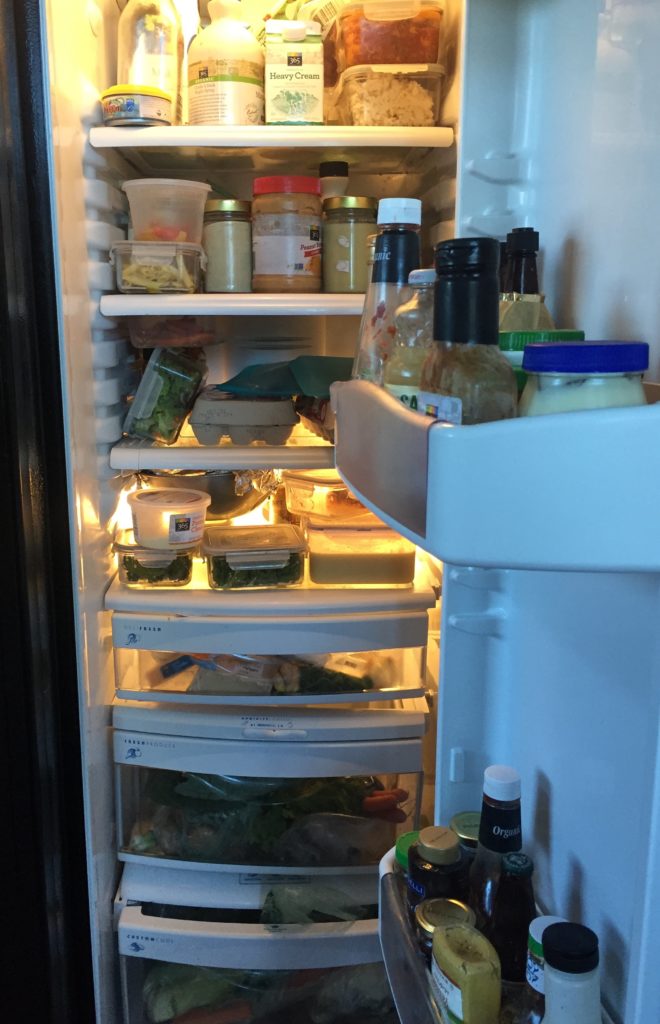
A Clean Slate
This new refrigerator is a lot like moving – you start with a clean slate and create a new space.
Not only will things be clean (and I won’t have produce drawers with dried out and flimsy brown carrots, smashed and mushy cucumber pieces, moldy sour cream, seriously outdated condiments, etc. etc.) My hope is that if I start with a clean slate, and keep things organized, it will be much easier, and less demanding, to keep it clean.
With the arrival of a new fridge, I now have a reason to do a bit of organization in the refrigerator and freezer. And, this time around, I’m going to follow a few rules. Yes, there are rules when it comes to refrigerator organization, and the find-a-space-and-stick-it-there method is not a rule.
BUT, before I get to organization, I wanted to say this: For overall food safety, saving on energy costs, and cutting down on food waste, be sure to maintain your refrigerator temperature at 40 degrees F or lower, and set your freezer to none other than 0 degrees F.
Now, on to storage . . .
All Space Isn’t Created Equal
Refrigerators can be pretty high tech these days, but you must follow certain rules to take advantage of these advances in modern technology. Just because there is room to put the cheese on the top shelf, doesn’t mean you should. Likewise, storing the carton of milk in the door because it is easy to access, may not be the best place for it.
The key to refrigerator organization is understanding your fridge zones: door, shelves, and drawers.
Door
The greatest temperature fluctuation occurs in the door, so pack it accordingly. The door is best for items that have natural preservatives in them, and are least susceptible to temperature changes – condiments, juice, and water (if you buy bottles). Because of temperature fluctuations, please don’t put eggs or dairy in the door. Eggs need consistent temperature making the middle shelves the best spot.
The Upper Shelf of the fridge is known to have the most consistent temperature, so storing your leftovers or ready-to-eat foods including salsa, deli meats, sodas or even herbs are ideally placed on these shelves. In general, the upper shelf is best for items that don’t need to be cooked.
The Middle and/or Lower Shelves are the coldest, so be sure to store dairy, raw meat, eggs and seafood on them. If space allows, place your milk on the lower shelf, and in the back – where it is coldest. The lowest shelf is also ideal for meat. For meat, it is best to assign a certain area of the lower shelves as the place to store it. Be sure to keep the meat in the original packaging, and place it on a plate to prevent any dripping. Remind yourself to frequently clean this section, you don’t want the raw meat bacteria spreading to other items you are storing.
Crisper: This is where moist conditions are maintained, and most refrigerators are equipped to allow the user the ability to control humidity in each drawer via a toggle switch, usually controlling a vent with a sliding door. When the vent is closed, you’ll have high humidity, and when open, low humidity.
The low humidity drawer is for items that rot (or ripen) quickly, including those ethylene-producing fruits and vegetables (with the vent open, gas can escape). While I don’t personally keep apples in the fridge, this is where they would go, along with cantaloupe, stone fruits, kiwis, and pears, for example. You can store an avocado in the crisper if you would like to ripen it slowly. When you anticipate needed one, just take it out of the fridge and let ripen on the counter.
The high humidity drawer is where you’ll keep your leafy greens, leeks, Brussel sprouts, cabbage, carrots, cauliflower, cucumbers, peas and peppers. The higher moisture content keeps these foods hydrated and crisp.
No Need to Refrigerate:
The refrigerator is the ideal environment for everything. Keep these out of the fridge – bread, onions, ripe avocados, tomatoes, bananas, honey, squash, potatoes and cake (it will be gone before it goes bad!).
Freezer:
The freezer has fewer rules, and beyond the obvious meat, ice, or fruits, the freezer is good for storing breads, tortillas, and while grain flours that are high in nutrients and oils (you don’t want them to go rancid).
Rethinking your Organization
Air needs to flow around the food in the refrigerator, so don’t pack it tightly. In the freezer, however, you can pack items closely – keep them organized and tightly to maximize energy savings.
In the fridge, to help reduce food waste, we look to a few essential items, that not only keep food fresh, but make it easy for organizing. Joseph Joseph’s Dial™ food storage containers come with a clever contra-rotating dial in the lid which allows you to clearly date the contents either by date stored or use by date.
We also like using our Bee’s Wrap for topping bowls which don’t have lids (instead of plastic wrap), and we use for covering half-used vegetables such as onion, tomatoes, and peppers.
Stasher bags are perfect for preserving cut fruit or leftover pizza in the fridge, and even storing premade meals in the freezer, then reheating directly in the bag!
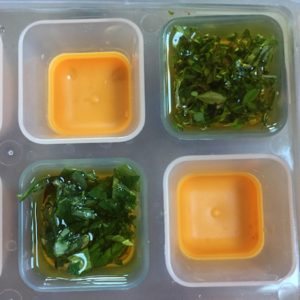 For any extra fresh herbs you may have on hand, chop them and mix with olive oil, then freeze in Zing ice cube trays, which feature silicone bottoms — simply push to release and add to your pot.
For any extra fresh herbs you may have on hand, chop them and mix with olive oil, then freeze in Zing ice cube trays, which feature silicone bottoms — simply push to release and add to your pot.
Once you realize that all space in the fridge isn’t created equal, you’ll rethink how you store certain items.
What are your favorite ways to keep order in the refrigerator? Share them below!



